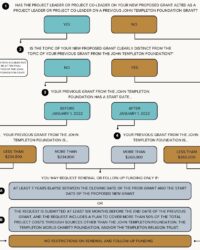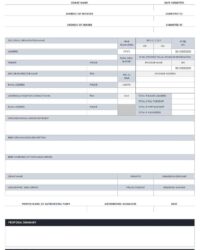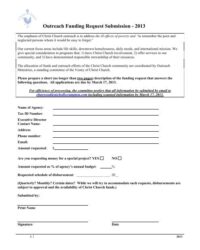Utilizing such a structure offers several advantages. It streamlines the writing process, saving applicants valuable time and effort. It also promotes consistency and completeness, reducing the risk of overlooking crucial details that funders often require. Furthermore, a well-organized submission can enhance the applicant’s credibility and professionalism, making a positive impression on reviewers.
The following sections will delve into the specific components of these valuable resources, offering guidance on crafting compelling narratives and developing realistic budgets. Further exploration will address common pitfalls to avoid and strategies for maximizing the chances of securing financial support.
Key Components of a Funding Request Structure
Successful applications for funding rely on a clear and comprehensive presentation of key information. These components work together to paint a compelling picture of the project and its potential impact.
1. Executive Summary: This concise overview provides a snapshot of the entire proposal, highlighting the key elements and capturing the reviewer’s attention from the outset.
2. Organizational Background: This section details the applicant’s mission, history, and accomplishments, establishing credibility and demonstrating capacity to manage the proposed project effectively.
3. Needs Statement: A clear articulation of the problem or opportunity being addressed, supported by evidence and data, is crucial for demonstrating the project’s relevance and importance.
4. Project Description: This section provides a detailed explanation of the proposed project, outlining its goals, objectives, activities, and timeline. Clarity and specificity are essential here.
5. Evaluation Plan: A robust evaluation plan demonstrates how the project’s success will be measured and reported, providing funders with assurance of accountability and impact.
6. Budget: A detailed and justified budget outlines all project expenses, demonstrating responsible financial planning and ensuring transparency.
7. Supporting Materials: Supplemental documents, such as letters of support, financial statements, and resumes of key personnel, lend further credibility to the application.
A well-crafted submission presents a compelling case for funding by addressing these core elements with clarity, precision, and a focus on the project’s potential impact.
How to Create a Structure for Funding Requests
Developing a structured approach to requesting funding ensures consistency and completeness, increasing the likelihood of a successful outcome. The following steps outline a process for creating such a structure.
1: Define the Purpose and Scope: Clearly articulate the project’s goals, objectives, and intended outcomes. A well-defined scope ensures all components align with the overarching purpose.
2: Identify Key Sections: Standard sections include an executive summary, organizational background, needs statement, project description, evaluation plan, budget, and supporting materials. Tailor these sections to specific funder requirements when applicable.
3: Develop Content Guidelines: Establish clear guidelines for the content of each section. Specify the required information, desired length, and appropriate tone. This promotes consistency and clarity throughout the document.
4: Design a Template: Create a template document incorporating the identified sections and content guidelines. Utilize formatting features like headings, subheadings, bullet points, and tables to enhance readability and organization.
5: Test and Refine: Pilot test the template with different projects and solicit feedback from colleagues or stakeholders. Revise the template based on feedback to ensure its effectiveness and user-friendliness.
6: Implement and Maintain: Integrate the template into the organization’s grant writing processes. Regularly review and update the template to reflect evolving best practices and funder requirements.
A structured approach to developing funding requests ensures consistency, improves efficiency, and enhances the likelihood of securing financial support. Regular review and refinement of the template are essential to maintaining its effectiveness over time.
A well-crafted, pre-designed structure for funding requests is an invaluable tool for organizations seeking philanthropic support. It provides a clear framework for presenting essential information, ensuring completeness and consistency, and ultimately increasing the likelihood of a successful outcome. From the concise executive summary to the detailed budget and supporting materials, each component plays a vital role in conveying the project’s merits and securing the necessary resources.
Strategic use of these structured documents empowers organizations to articulate their needs effectively and demonstrate their capacity to achieve meaningful impact. Investing time and effort in developing and refining such resources is an investment in the long-term sustainability and success of any organization reliant on external funding.


